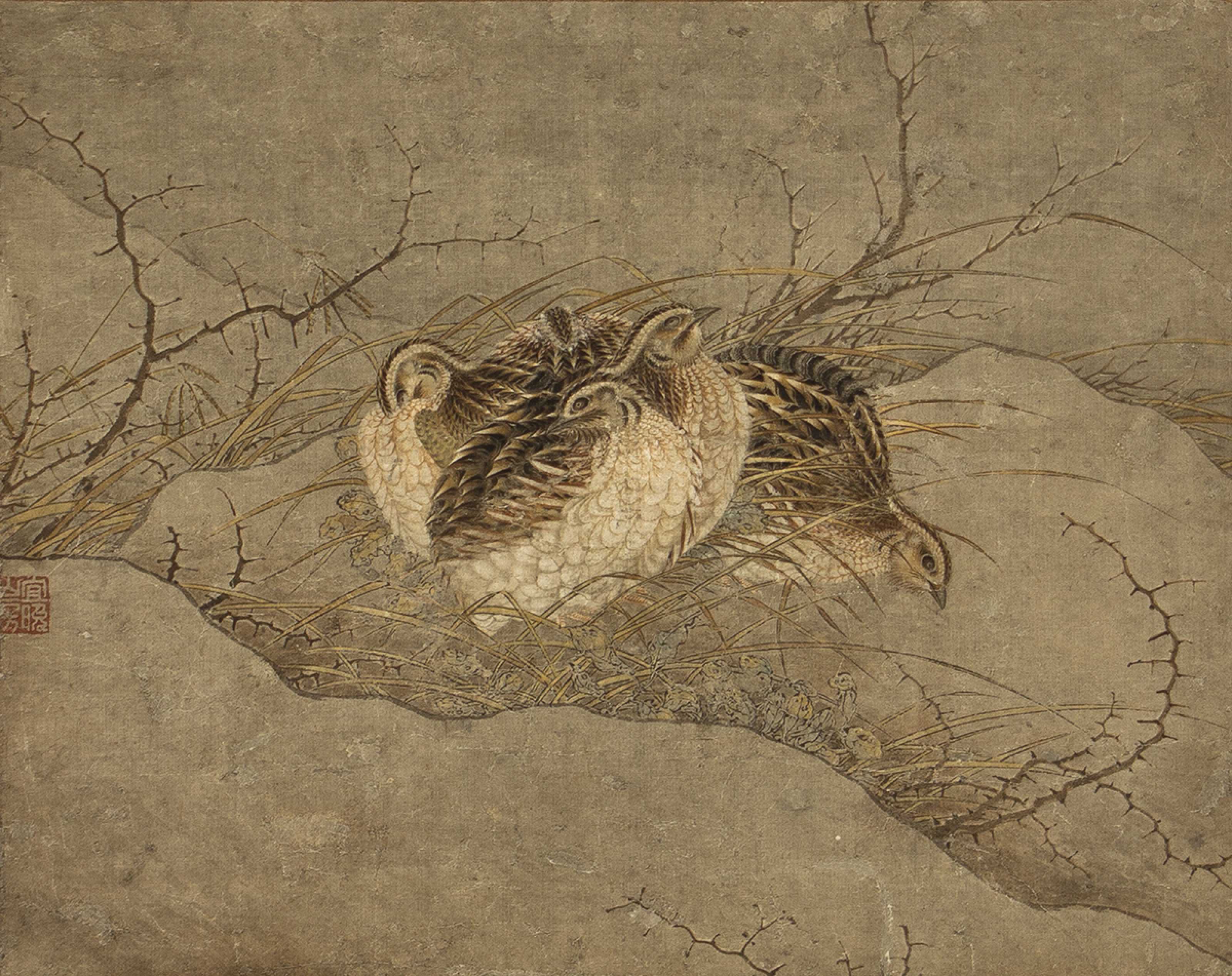Symbolic Messages in Chinese Animal Paintings

"Five Quail," 1200s Southern Song – early Yuan Dynasty, Hanging scroll, ink, and color on paper, 13 1/2 x 17 1/4 in. (34.3 x 43.8 cm), Acquired through the generosity of the John and Heidi Niblack Fund, 2011.27
Beyond the delicate beauty of the five animal paintings in this installation, each work has social or political connotations illustrated through rich, evolving, symbolic associations and homophonic puns. These symbolic messages reveal much about the history and culture of one of the world’s greatest civilizations. For example, while quail imagery typically celebrates autumn, the unique painting of five quails huddled together on rocky barren ground, amongst dry grass and leafless twigs, relays a veiled political message. The Chinese word for “five quail” (五鹌鹑, wu anchun) is a homonym for “no peace” (无 安, wu an). During the 13th century, terror reigned as the Mongols swept across Asia creating the largest contiguous empire in world history, stretching from eastern Europe to Korea. In China, a hierarchy of four groups was established with the Mongol elite at the top and the people of Southern China, traditionally the homeland of scholars and painters, at the bottom. This is but one of the five paintings in this installation which convey symbolic meanings.